Estadio de la Cerámica (Feudo Amarillo)
| Capacity | 23 000 |
|---|---|
| Country | Spain |
| City | Villarreal |
| Clubs | Villarreal CF |
| Other names | Campo del Villarreal (1923–1925), Estadio El Madrigal (1925–2017) |
| Floodlights | 2,000 lux |
| Inauguaration | 17/06/1923 (Deportivo Cervantes - CD Castellón) |
| Renovations | 1952, 1972, 1989, 1998-1999, 2005, 2022 |
| Address | Carrer Blasco Ibáñez, 2, 12540 Vilareal, Castelló, Spain |
Advertisement
Estadio de la Cerámica – stadium description
Villarreal is a city with such thick urban fabric and road network that it's no wonder their main stadium also seems to be stuck between homes. Only the western facade is significantly exposed. It's been a constrained site from the very beginning in 1923, when both the club and stadium were created.
The name El Madrigal began officially functioning in 1925, previously the ground had been referred to as Campo del Villarreal.
In 1952 first major renovation began, seeing the field significantly expanded from 95x65m to almost the current standard (105x65m compared to standardised 105x68m). In 1972 the south stand was demolished and rebuilt only to be torn down and rebuilt again in 1988-1989 and then once more ahead of the 1999/00 season. At that last time also the northern main grandstand was redone.
From 1973 the stadium has operating floodlights but perhaps most surprisingly its changing rooms have over the years been moved between three corners of the ground until they finally ended in the northern main grandstand, where they are today.
In the 21st century the stadium went through several other changes and two major expansions. In 2008-09 the east stand received and upper tier, currently used as the away enclosure. In 2017 the building was covered with yellow ceramic tiles in order to boost its identity and commercial value. Numerous ceramic manufacturers are displayed on the stadium in a unique naming deal.
Between May and December 2022, the stadium underwent another major upgrade. During that time, a new roof covering all stands was built, new usable spaces under the stands were created, all seats were replaced, new video screens were installed, and the missing stand in one corner was added. The yellow exterior façade, already partly completed in 2017, was also finished and the facility has been given a more coherent, unified form.
How Estadio de la Cerámica compares to other LaLiga stadiums?
Advertisement
Pictures
-

30.12.2022 © Villarreal CF 
30.12.2022 © Villarreal CF 
30.12.2022 © Villarreal CF 
30.12.2022 © Villarreal CF 
31.12.2022 © Villarreal CF 
31.12.2022 © Villarreal CF 
07.01.2023 © NAVE DEL MADRIDISMO 
07.01.2023 © NAVE DEL MADRIDISMO 
07.01.2023 © NAVE DEL MADRIDISMO 
07.01.2023 © NAVE DEL MADRIDISMO 
07.01.2023 © NAVE DEL MADRIDISMO 
07.01.2023 © NAVE DEL MADRIDISMO 
2017 © Villarreal CF 
28.04.2017 © Jörg Pochert 
2017 © Villarreal CF 
28.04.2017 © Jörg Pochert 
28.04.2017 © Jörg Pochert 
28.04.2017 © Jörg Pochert 
28.04.2017 © Jörg Pochert 
28.04.2017 © Jörg Pochert 
28.04.2017 © Jörg Pochert 
28.04.2017 © Jörg Pochert 
28.04.2017 © Jörg Pochert 
28.04.2017 © Jörg Pochert 
28.04.2017 © Jörg Pochert 
28.04.2017 © Jörg Pochert 
28.04.2017 © Jörg Pochert 
28.04.2017 © Jörg Pochert 
10.12.2017 © Frank94Rock (CC BY-SA 4.0)
2017:
Related news
2025
-
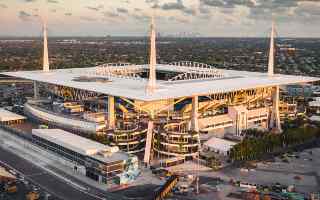
USA: LaLiga match between FC Barcelona and Villarreal to be played in Miami
LaLiga president Javier Tebas has confirmed that the Week 17 fixture between Villarreal and FC Barcelona, scheduled for the weekend of December 20–21, will take place in Miami.
-
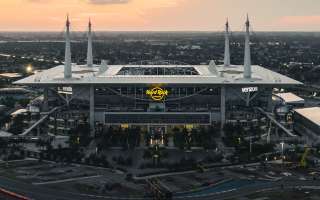
USA: Real Madrid call Miami Barça game “unacceptable”, seek FIFA & UEFA support
An "unacceptable precedent", undertaken "without information or prior consultation with the clubs" and that "breaks the equality" of the competition. Real Madrid are not mincing their words in their statement against La Liga's proposal to play Barcelona-Villarreal in Miami and are calling on FIFA, UEFA and the CSD to stop the process.
-
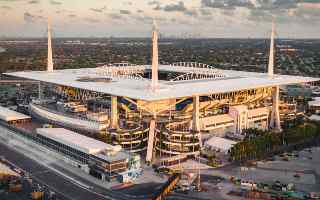
USA: La Liga in Miami. FC Barcelona to play a league match in the US?
La Liga wants to stage FC Barcelona’s December fixture not in Spain, but in Miami. If the plan goes ahead, it would mark the first time any of Europe’s top leagues has played a competitive match outside its home country.
-
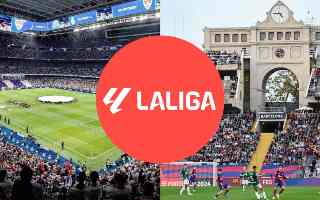
Spain: Attendance at La Liga stadiums in the 2024/25 season
Attendance at La Liga stadiums this season once again broke all records. Most fans came to the Santiago Bernabéu, but it was Barcelona's temporary stadium that was most full. The stadiums of Espanyol, Las Palmas and Getafe were regularly empty.
-

Spain: We’re launching in Spanish! A new YouTube channel
Some time ago, we quietly launched our new YouTube channel in Spanish – EstadiosDB. In the first full-length video, we present a ranking of the LaLiga 2024/25 stadiums, from Vallecas to Santiago Bernabéu, with an in-depth analysis of each venue.
-
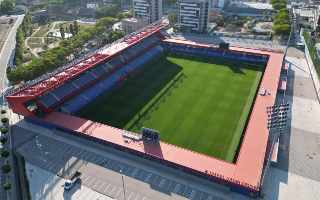
Spain: Another option for El Clásico – Estadi Johan Cruyff
According to information from Catalunya Ràdio, during Tuesday’s board meeting, FC Barcelona considered the possibility of hosting El Clásico at Estadi Johan Cruyff, regarded as the gem of Ciutat Esportiva in Sant Joan Despí.
2024
-
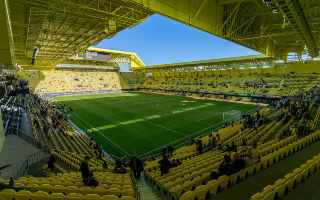
Spain: Yellow Submarine’s innovations. What has Villarreal prepared for their fans?
Villarreal certainly wants to forget the past season, which proved below the expectations of fans from Vila-Real. They were reluctant to fill their favourites' stadium. For the conclusion of the 2023/24 season, the Villarreal authorities have prepared changes to the stadium and an interactive museum deep inside the Yellow Submarine.
-
Spain: Attendance at La Liga stadiums in the 2023/24 season
More than 11 million tickets were sold for Primera División matches. The record number represents another increase on previous seasons. Real Madrid and Atletico surpassed the one million spectator barrier, while Barcelona surprised by recording a mere 80% stadium fill despite playing at Montjuic. Two clubs, on the other hand, did not even exceed 70%.
-

Spain: How did reconstruction of La Cerámica impact Villarreal's finances?
Villarreal closed the year 2023 with financial stability and a consolidated fan base. This was achieved despite the costly renovation of the stadium and a decrease in European cup revenues compared to previous years. Additionally, it was a year in which the club celebrated its centenary, marked by various events.
2023
2022
-

Spain: Meet the 2022/23 LaLiga stadiums!
The next season of the Spanish elite starts this evening. It will be a special year for fans around the world, as Robert Lewandowski will soon make his debut at LaLiga stadiums. Therefore, we have prepared for you an overview of all twenty Spanish football arenas from the top tier of competition.
-

Spain: Demolition first, construction to start soon in Villarreal
“The Yellow Submarine" is on a roll. After a sensational season in the Champions League, where the Spanish team was knocked out only in the semi-finals against Liverpool FC, fans can not complain about a lack of emotions. Now they have been provided with visuals showing how the stadium will look after the €35 million renovation.
-

Spain: Villarreal to revamp stadium for club's centenary
How to celebrate an important anniversary shows the club from the province of Castellón. A cash injection from CVC Capital Partners will allow the venue to be modernised. As a result, Estadio de la Cerámica is set to become a 5-star arena by UEFA standards.
2018
2017
2016
2015
-
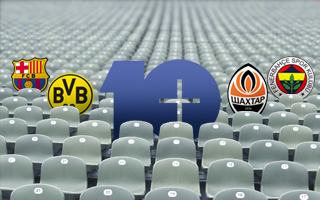
10+ Ranking 2015: Attendances in Europe (Part 2. The Clubs)
Borussia, Barca and Man United – lovely dominant trio. But it wasn’t them who gained most fans last season. Check all 217 clubs that draw an average crowd of 10,000+!
-

10+ Ranking 2015: Attendances in Europe (Part 1. The Leagues)
Numbers don’t lie: French Ligue 1 outgrew Italian Serie A as Europe’s fourth largest league. Premier League seems unlikely to catch up to Bundesliga, while Turkey, Ukraine and Scotland are down.
 StadiumDB
StadiumDB





